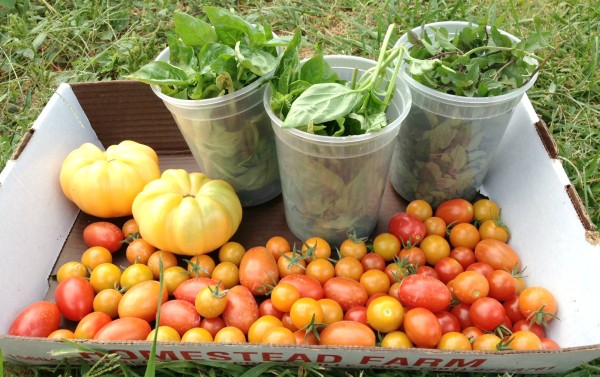This is the final post of a 4-part series about kids and food. Part 1 is about establishing and encouraging healthy attitudes toward food, Part 2 is about making food fun, and Part 3 is about expanding kids’ palettes and preferences. Today’s post is about handing responsibility for healthy eating over to your kids.

In the past three weeks I’ve talked about ways to create a healthy attitude and even more importantly, an open mind toward food. Your goal is to help your kids view food as a source of good nutrition and a way to stay healthy, as a source of family connection, and a source of exploration and fun.
None of these things happen overnight (unless you’re very, very lucky) so don’t get discouraged. Take it slow, stay lighthearted with it, celebrate positive changes and try not to worry and stress about lack of progress or even negative progress (and for goodness sake don’t nag about the negative either!). Keep your cool, mama. This is a shared journey, not a power struggle.
Eventually you want to move into healthy, sustained patterns of good eating where your kids are making nutritious choices for themselves most of the time. Over time, these develop into lifelong habits which is really what you want, right? You may provide meals for your kids for their first 20 years but for the next 60? They’re on their own. What good motivation to start them off with a solid foundation now, right?
These are some general guidelines that work for us – surely you’ll come up with some of your own as you go along:
- Unless you’re working around a particular medical issue or religious/philosophical guidelines, don’t make food a battleground. Be open to whatever preferences your kids develop and go with the flow. Tastes change with time and exposure.
- Moderation is key. A good mental guideline is the 80/20 rule – healthy, wholesome foods 80% of the time, more questionable choices allowed 20% of the time. You might be surprised at how over time, kids develop a taste for better choices and start to shun things like fast food. Again, aim for slow and steady progress here.

- Allow for periods of junky foods once in a while, as circumstances warrant. A birthday party? Go all out. You’re planning a trip to the state fair? Then enjoy all the greasy, salty, sticky-sweet treats while you’re there. There’s no sense in making a battle over it. Moderation means good foods leading up to and after the trip, but let your kids be kids when they’re in an unusual place and faced with junk food options.
- As you plan your menus week to week, as your kids for input and be sure to take it! If you don’t want their input, then don’t ask. But I suggest you do ask, and do everything possible to accommodate reasonable requests. Kids are much more likely to eat meals they’ve helped plan than those they just show up to the table for.

- Mix new foods you’re trying out with old favorites. Some suggestions are sautéing chopped brussels sprouts with bacon, or adding some blanched kale to a pasta dish, or mixing in some new greens with familiar lettuce (and topping the salad with berries or other familiar favorites). Get creative with your combinations, kids don’t know what’s “conventionally” served together and why should they care anyway? Go with what works!
- Let your kids make their own lunches once a week. Give them your minimum expectations for something nutritious and let them go from there. Will it be your ideal lunch? Probably not at first. But over time you’d be surprised at how kids start incorporating healthy habits across all different environments when given the chance to.
- And perhaps most important, be a good role model yourself! You can’t expect your kids to eat any better than you do, so be sure that what you’re asking them is consistent with your own eating habits. These habits include eliminating or minimizing fast good, making balanced choices over time, choosing treats in moderation, and sticking to (and serving!) moderate portions.
I hope you’ve found this series to be informative and helpful and it’s sparked a few new ideas for your family. Above all remember that eating together should be not only healthy, but a warm, welcoming experience for everyone. Taking the time to make meals nutritious and pleasurable is something that will stay with your kids the rest of their lives, it’s an investment in their future health and it nurtures your connection as a family.
Happy and healthy eating!

